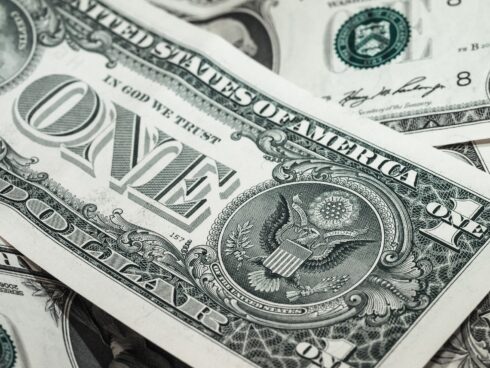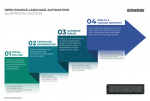
Over the weekend, many companies in the tech industry had to live through their worst nightmare as the bank holding the cash that many companies in the industry rely on collapsed.
Silicon Valley Bank (SVB) was the largest bank in terms of deposits in the Silicon Valley area up until its collapse on Friday.
The New York Times reports that around 2,500 venture capital (VC) firms banked there. Among them are Lightspeed, Bain Capital, and Insight Partners.
“SVB is widely regarded as one of the bedrocks of the tech world, having contributed significantly to the growth of the tech ecosystem,” said Tal Kirschenbaum, CEO and co-founder of Ledge, a fintech company providing payment visibility.
The collapse is the second worst of a bank in U.S. history, following the collapse of Washington Mutual in 2008. There were several factors that led to a “bank run,” which ultimately caused the collapse. A bank run is when a large proportion of customers of a bank panic about their money and withdraw as much cash as they can. While banks do keep cash in reserves, most of the money is tied up in investments, so when a large number of customers suddenly want to withdraw their money, then it’s possible that the bank doesn’t have enough money in their reserves to cover it.
The SVB homepage currently includes a statement that says that the FDIC has transferred both insured and uninsured deposits to a new bridge bank operated by the FDIC where customers can access their funds.
Typically the FDIC insures up to $250,000, but many companies have much more than that if their entire operating budget is being held.
“All insured depositors will have full access to their insured deposits no later than Monday morning, March 13, 2023. The FDIC will pay uninsured depositors an advance dividend within the next week. Uninsured depositors will receive a receivership certificate for the remaining amount of their uninsured funds. As the FDIC sells the assets of Silicon Valley Bank, future dividend payments may be made to uninsured depositors,” the FDIC wrote in a statement.
President Joe Biden said at a press conference on Monday: “Americans can rest assured that our banking system is safe. Your deposits are safe. Let me also assure you we will not stop at this. We will do whatever is needed on top of all this.”
Even companies not banking at SVB may feel impact
Kirschenbaum said that fintech companies who have built their products on top of SVB’s payment rails or use their payment rails to move funds could face difficulty in continuing to operate.
“This will have ripple effects across the ecosystem, affecting mission-critical services like payroll vendors, accounts payable or accounts receivable automation, working capital solutions, and health insurance vendors,” he said.
He recommends that even companies that didn’t bank at SVB take action that will minimize their risk and exposure. For example, they should assess mission-critical services and identify any providers relying on SVB and ensure that they can still support their operations and services.
“This is a challenging time for the tech industry, even for those companies that have not been directly affected by the recent developments,” he said.
Collapse underscores the importance of diversifying assets
Amy Spurling, founder and CEO of employee perk company Compt, said that Compt had moved its money out of SVB about four years ago, but that the way a lot of funding works is you raise money and get mandated a bank and that bank requires you to not only put your investment money there, but also your operating money, which was the case at SVB.
“That’s not allowing you to do solid cash management of diversifying your funds,” she said. “And so I think that will absolutely be different coming out of this as everybody is scrambling to diversify and get their money into multiple banks and different instruments.”
She predicts different instruments for managing money to become more popular as a result of the collapse, such as treasury stocks or sweep accounts, which are accounts that are set up to automatically transfer money out and into a different account when it exceeds a certain level.
“Looking at sweep accounts is really important, because if you’ve got $2 million sitting in checking, that’s not insured, that’s not FDIC guaranteed,” said Spurling. “But if it’s in a sweep account, they basically move it to as many bank accounts as necessary — eight with $2 million — to where every single piece of your money is covered, but you’re still liquid, you can still get access to your money.”
Alex Lazarow, a 15-year global venture investor, said that until now many startup founders had viewed banks as “foolproof third parties through which to acquire, store and build capital.”
“VCs, including myself, will likely advise startups to diversify their capital stack — from bank partners, to venture funds, to capital sources (e.g. including loans, revenue based financing etc) moving forward,” he said. “This will be an opportunity for both nimble fintechs with specialized products, and conservative incumbents who offer steadfast security.”
The impacts to women founders
Women have for a long time struggled to find funding and achieve equal representation in the startup ecosystem, explained Tai Aracen, founder of Synergy818, which enables companies to gain capital through corporate partnerships.
In 2019, SVB had launched a program called Access to Innovation designed to increase funding opportunities for women and minorities.
“We launched our signature Access to Innovation program to create opportunities across the innovation economy – because when more people get the chance to share unique perspectives and ideas, there’s no limit to where bold thinking can take us,” SVB’s 2022 Diversity, Equity, and Inclusion report stated.
According to Aracan, SVB’s position in the VC ecosystem made it uniquely suited to implement a program like this. “The loss of this program and the ally that was SVB is likely to have a significant impact, particularly on women,” she said.
This will have not just an impact on women, but on the technology industry as a whole, as diverse teams tend to outperform those that are not.
A 2019 Harvard Business Review report found that teams with inclusive leaders are 17% more likely to report being high-performing, 20% more likely to say they are high performing, and 29% more likely to work collaboratively.
A similar study from Workable revealed that companies in the top quarter for gender diversity were 21% more likely to generate higher profits.
“Despite these challenges, women founders will remain resilient and innovative, looking towards numerous examples of highly successful woman-founded tech companies, such as Canva, Stitch Fix, and The RealReal, that have achieved significant growth and profitability,” said Aracen. “Ultimately, women founders seek equal opportunities to access all available funding options and will continue to create opportunities and spaces to thrive. The elimination of SVB’s program is a significant setback, but women entrepreneurs will find a way to continue to drive innovation and success in the innovation industry.”
Comparisons to 2008 crisis
Compt’s Spurling was a CFO during 2008 and explained there are many differences between what happened in 2008 and what happened over the weekend.
“It’s not based on, you know, the fundamentals and the financials of the banks that this is happening to — not to say that SVB didn’t have a lot of issues in their balance sheet,” she said. “But the collapse was really driven by Twitter frenzy. And so that is very, very different. That didn’t exist in 2008.”
The concern companies face now is whether they will be able to access their operating budget, whereas back then, the issue was more “Is our business viable?”
“A lot of [the 2008] collapse was based on the failing fundamental financials of those companies,” she said. “They were going to fail. That’s not what’s happening right now. There’s banks with very good financials that have their stock prices doing really horribly today because of just irrational market fear right now, so we’re in uncharted territory.”
Spurling explained that another major difference is that this collapse was so quick; it happened in a matter of 48 hours. “This is happening in real time, and is being driven by a frenzy online. And that is just something that we haven’t experienced or seen before,” she said.






